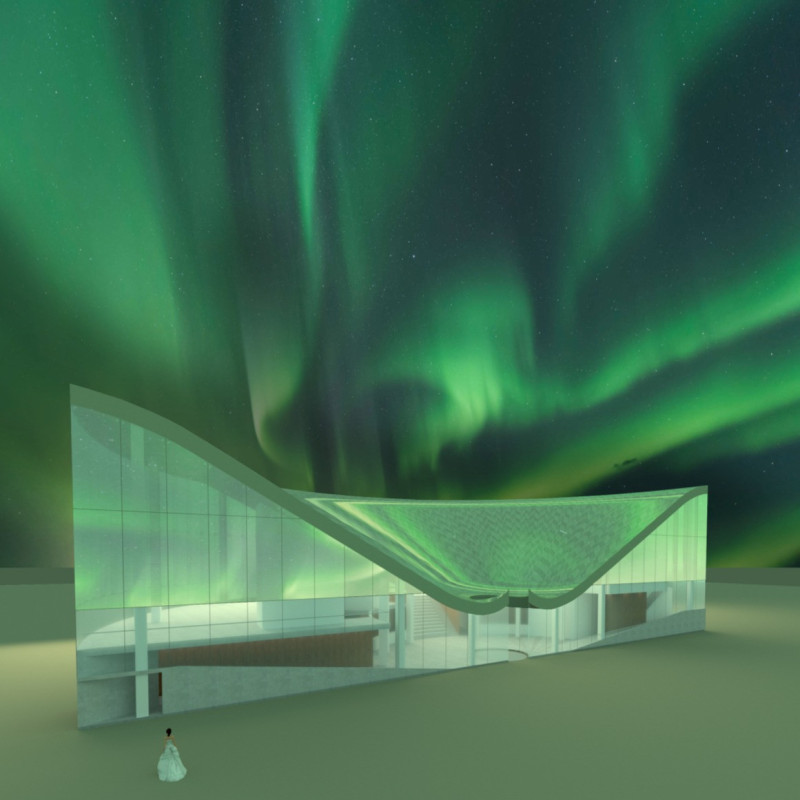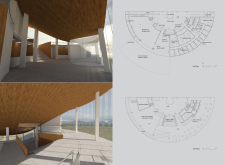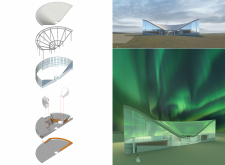5 key facts about this project
The museum dedicated to volcanoes is set in the stunning landscape of Iceland. It serves as a tribute to the country’s rich volcanic heritage. The design reflects the unique geological characteristics of the area, positioning the museum in a way that invites visitors to connect with its natural surroundings. At its core, a reflective courtyard acts as a communal space where guests can gather and engage with educational exhibits.
Design Concept
The museum takes the form of a cross-section of a volcano, emphasizing the relationship between architecture and natural landforms. The central courtyard is the heart of the building, creating a space that links the interior with the outdoor environment. Inspiration from the lava formations at Dimmuborgir informs the roof design, ensuring that the structure aligns closely with the volcanic features of the landscape.
Facade Configuration
The northern facade presents a flat surface that reflects its surroundings, while the southern side features transparency and curves. This combination allows for a play between openness and enclosure. The reflective aluminum cladding on the roof enhances the building's interaction with the external environment, especially during the evenings when the northern lights can be seen.
Internal Layout
Visitor experience plays a key role in the internal organization of the museum. The exhibition hall is designed with flexibility in mind, featuring removable walls that allow for connections to the atrium and bookstore. This arrangement improves movement throughout the building. The layout ensures a logical flow, guiding visitors through various educational installations while still encouraging exploration.
Visitor Experience
Careful attention has been given to how visitors will navigate the museum. From the entrance, guests are led to the second floor, which offers wide views of Mývatn lake and Hverfjall volcano. Central stairs provide seating and a platform for multimedia displays. Each design element enhances the connection between the interior spaces and the scenic beauty outside.
The roof recalls the shape of lava formations, which not only creates a visual link to Iceland’s geological features but also includes systems for rainwater collection, highlighting a focus on sustainability.






















































